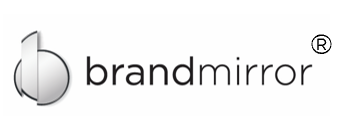What is a personal brand, and why does it even matter? Put simply, your brand is your reputation. It’s the words that people think of to define you. It’s how relevant you are, and what conversations you are a part of. It’s how you stand out from others. If you don’t define your personal brand, others will define it for you, and this is why being in charge of your brand matters.
Brands create an emotional connection. When people think of Volvo, they often don’t just think car, they think safety. Apple is no longer just a fruit, but an innovative technology company. And you can’t think about Nike without thinking sports or speed. What emotional connection do people have when they think about you? There are actionable ways to control that, so let’s go over a few.
Understand Where You Are Today
First, we need to do some foundation building. To define your personal brand, we need to look at the Three D’s: Discover, Design, and Differentiate. Start with doing some self-reflection.
- Ask yourself questions like: What do I want to do? What is the impact I want to have? What are my skills, strengths, and values? Where am I? Where am I going?
- Think about 5 words that you think describe you, then go and ask your friends, family, even clients what their words for you would be. Compare the two, and think about how you might align them better.
- Take a Digital Inventory. Google yourself and see what shows up. Ask a friend to search for yourself on LinkedIn by name, and then by role, and see where you show up. How hard is it for someone to find you?
It’s important to understand where others think you’re at because others’ perception of you is the reality of your personal brand.
What Do You Want People To Say About You When You Are Not in the Room?
Now, onto Design. Here we can look at some actionable steps to take towards designing your own brand. After you’ve figured out how people define you now, think about the ways you WANT people to define you. These are the words that will make up your Brand DNA. Think about how you want to show up, and start to design that brand. Be consistent. Does your work space, the way you dress, how you show up in meetings, and how you interact with others align with your Brand DNA? George Bernard Shaw said, “Life is not about finding yourself. Life is about creating yourself.” Look at your LinkedIn page – is it telling a story about your brand, or is it just a copy of your resume?
If you’re having a hard time designing your Brand DNA, make your signature storyboard. Go through your history and find pictures that mean a lot to you emotionally, where you really liked the person you were at that moment. If you’re not visual, think of words or phrases where you really deliver in a powerful way. This can make up your storyboard, and this will help you define your brand promise. A brand is, essentially, a promise, so take time to create your Leadership Promise Statement. What can people expect when they work with you? How can you present this to people in, say, networking scenarios? When you introduce yourself, what do you say? Take this Promise of Value and make sure it’s consistent online. Show evidence of it everywhere. Prove it to everyone who looks.
Own What Makes You Unique and Different
Next, you need to Differentiate yourself from everyone else. What is your position? Look back over your storyboard and your Brand DNA and figure out what you have offered in the past that nobody else could’ve done. Figure out who your audience is. What companies do you want to be a part of that inspire you? What boards do you want to be on in your community? Taylor your brand to be approachable to your audience. Who are your competitors and who do you look up to and why? Spend some time researching them, how they got where they are, what exactly they’re doing. Figure out what their brand is.
Now you can start creating value and opportunities for yourself. Think about what you should be talking about. Should it be company related? Or perhaps about your passions, or your particular set of skills? Does what you have to say matter, and will people care? Is it relevant? Are the right people seeing you? How can you get them to care AND share what you talk about? Who are the leaders and influencers writing in the same space? These are the key elements that make up your Digital Brand. You can also create opportunities for yourself offline. You can join a board or volunteer in an organization. You can interview people in your same space and blog about it. You can network with others, and look for places to share your insights. You can look for speaking opportunities and webinars.
Plan Your Work, and Work Your Plan
Remember, timing is everything. Create an editorial or visibility calendar for your brand – where to be, when to write posts and blogs. You want to stay visible. In many cases, out of sight is out of mind. Make sure that your content is easy to share and re-purpose. Write about other people, companies, and organizations. Be sure to tag them when you post your content. This creates opportunities for others to share and help make you more visible. Write about others and help them be visible. Share helpful articles. Give shout outs on Twitter, LinkedIn, Facebook, and Instagram. Write recommendations on LinkedIn for people and on Google+, and Facebook for businesses. Send thank you notes, and provide recognition. Be genuine. Don’t expect things in return. Contribute to your brand by giving to others. Above all, be authentic. Authenticity contributes greatly to your personal brand. It’s easy to tell when someone is being disingenuous, and that puts a big hit on their brand or the way we think about them. Although you may plan a lot of your communications, be spur of the moment too and share things real time.
Lastly, monitor yourself, and listen to what others are saying about you. Continue to search yourself on Google and LinkedIn. Ask people to describe your brand periodically to check up on yourself. Do your own self-reflection when you can. Keep control of your brand, the emotional connection people make to you, by monitoring yourself using the steps above. Remember, although you are not a product, you do have a reputation and people will decide to work with you and help you based on your brand.
“People may not remember exactly what you did, or what you said, but they will always remember you how made them feel.” Maya Angelou
Be a noisebreaker, not a noisemaker.
Jen

